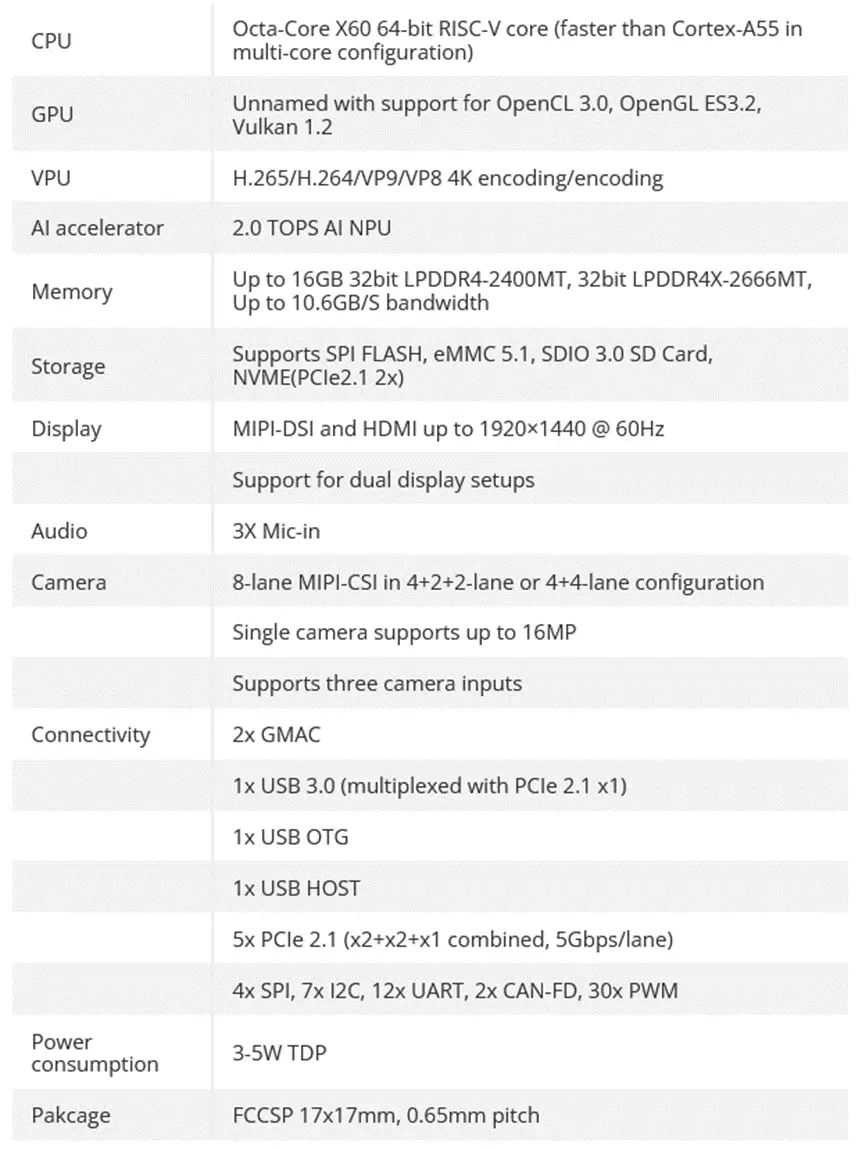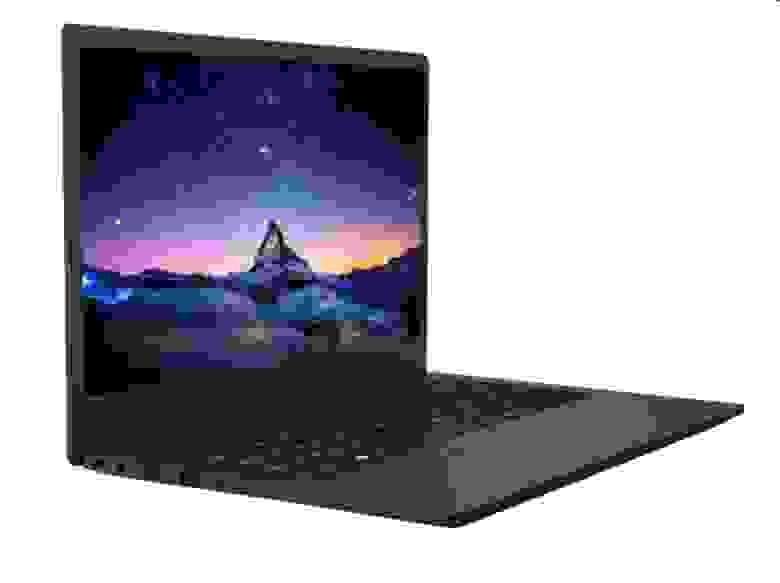
Gadgets with RISC-V processors are no longer uncommon - some companies, mainly from China, produce interesting models. Now there are even more devices of this kind - the Chinese company SpacemiT has released a laptop that is based on an 8-core RISC-V chip K1. There are other proposals, details are under the cut.
What's new?
According to company representatives, the MuseBook laptop, as it is called, is intended for hardware developers, programmers and DIY enthusiasts. At the same time, its price is very affordable - only $300. Of course, this device is not suitable for working with “heavy” content, but that was not the goal.
As far as one can judge, the developers sought to make their device similar to a MacBook, because even the model name is somewhat similar. But that's where the similarities end.
The laptop has a 14.1-inch display with a resolution of 1920 × 1080 and a screen refresh rate of 60 Hz. The keyboard is familiar to many, but the Windows button has been replaced with an analogue with the RISC-V logo. It is still unknown what function is attached to it, because it was not added in vain.

The weight of the device is 1.3 kg, thickness - 18 mm. There is a slot for microSD memory cards, two USB-C ports, two USB 3.0 Type-A ports, a headphone connector, and an 8-pin connector with support for interfaces such as I2C, UART, PWM, GPIO.
Here is a complete list of device characteristics:
SoC: SpacemiT K1 8-core X60 RISC-V chip with RVA22
ОЗУ: вплоть до 16GB 32bit LPDDR4-2400MT, 32bit LPDDR4X-2666MT
memory: 32GB eMMC there are also models with a capacity of 128GB. There is also an M.2 socket (PCIe 2.1 2x) for NVMe SSD up to 1TB and a slot for MicroSD memory cards
display: 14.1" IPS display with 1920 x 1080 resolution, 60Hz
net: RTL8852BE-based Wi-Fi 6 module
питание: USB PD 3.1 Type-C port
dimensions: 322.6 × 209.2 × 17.8 mm
weight: 1.36 kg
OS: Bianbu OS from Debian, Ubuntu, Linux supported
Browser Chromium
In addition, there is a complete list of processor characteristics, here it is:

The device is equipped with both eMMC memory and the ability to connect an SSD with a capacity of up to 1 TB. RAM can be installed up to 16 GB - more, unfortunately, is not supported.
The optimal OS for the device is Bianbu OS, it is optimized specifically for the K1 RISC-V SoC chip. The laptop will be supplied with software such as LibreOffice and Chromium. In addition, OpenCV, OpenBLAS, Slam Eigen, libpng, libjpeg, XNNPACK and other libraries and tools for developers will also be included.
What else?
In addition to the laptop described above, other devices with RISC-V chips are available for developers and others.
Laptop Lichee Console 4A

At first glance, the laptop looks like a smaller model of one of the Lenovo devices. But in fact, this is the development of an independent company that decided to release a device for developers. This laptop has a screen with a diagonal of only 7 inches, in addition, it has 16 GB of RAM and an LM4A TH1520 processor. It’s probably better to immediately announce the price - it’s $300, which is not that much. True, this is only the pre-order cost; how much the device will cost after going on sale is still unclear. But it's unlikely to be much more.
Despite its small size, the device's capabilities are quite good. In particular, it is compatible with LPDDR4X RAM, a 128 GB SSD is installed, and it is also possible to connect an external NGFF SSD. The display is 7-inch with a resolution of 1,280 × 800. There is an HDMI port that allows you to connect an external monitor. By the way, the laptop’s own screen is touch-sensitive and capacitive. For conferences, you can use a 2 megapixel camera.
Here is the full list of Lichee Console 4A specifications:
SOM: LM4A (TH1520, 4 × C910)
RAM: 16GB LPDDR4X
inner memory: 128GB eMMC + external NGFF SSD
display: 7 inches, 1 280 × 800, miniHDMI included
input: Capacitive Touch, RedPoint 72-keyboard
camera: 2MP front camera
аудио: 3.5mm
net: Wi-Fi 6 + BT5.4, optional - 1 × GbE
ports and connectors: 1 × USB3.0 Type-A, 1 × USB3.0 Type-C, 1 × USB2.0 Type-A, 1 × MicroSD
battery: 3000mAh@7.6V
dimensions and weight: 18 × 14 × 2 cm, 650 g
ROMA

This is the world's first laptop based on RISC-V architecture, which was released exactly a year ago. True, very few copies were produced - only about 1,000. Moreover, to purchase it was necessary to contact the manufacturer, specifying the price and specifications of the device.
As for the characteristics, the device is based on the Alibaba T-Head TH1520 processor with four 64-bit Xuantie C910 cores, which operate at a frequency of 2.5 GHz. It also has a neural processor with up to 4 TOPS performance and an Imagination graphics chip.
Its screen is twice as large as the previous model - 14.1 inches with a resolution of 1,920 × 1,080 pixels. The developers also provided 16 GB of RAM and 256 GB of storage. The equipment also includes a backlit keyboard, an SD card reader, HDMI, USB-C, USB-A and Ethernet ports, Wi-Fi 5 and Bluetooth adapters, and a 1080p webcam.
BPCD

And this is a laptop with an open architecture, which is called Balthazar Personal Computing Device (BPCD). The main goal expressed by the developers is to provide users with complete control when working with a PC, which is created based on open and secure standards.
The concept of the device is similar to the Framework Laptop, about which we already wrote . In addition to openness, this also supports the idea of the “right to repair”, so that the laptop, according to the manufacturer’s plan, should be able to be repaired even by a user with no repair experience at all, and with a minimum of tools.
The case is made from polycarbonate, aluminum composite or recyclable plastic, with hot-swappable battery and storage, a waterproof, low-profile keyboard with Cherry MX switches and a passive cooling system.
Probably in the near future we will see other models from Chinese manufacturers - and not only laptops, but also tablets, game consoles, etc.

